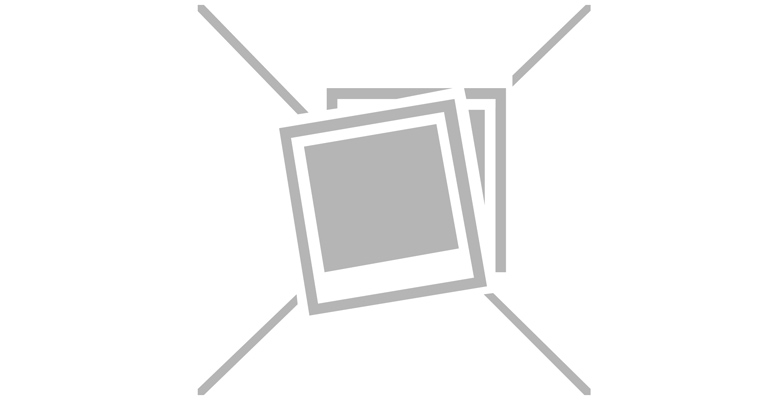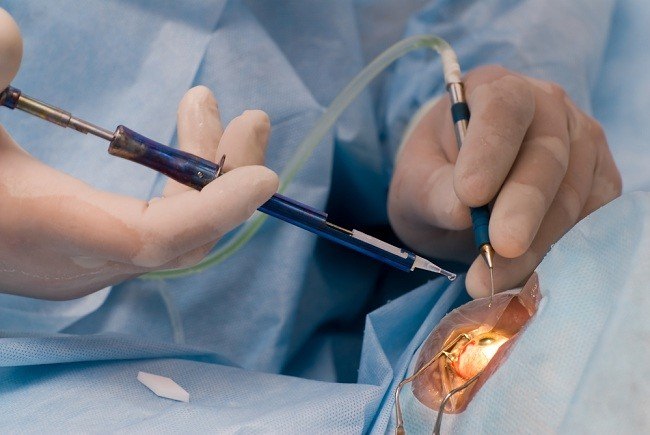Chiari malformation or Chiari malformation is an abnormality in the formation of the structure of the skull that occurs during fetal development. The disorder causes pressure on the cerebellum and brainstem.
Normally, the cerebellum and brainstem are located above the opening that connects the brain to the spinal cord (foramen magnum). In Chiari malformation, a disturbance in the structure of the skull causes some of the cerebellum tissue to pass through the foramen magnum and down into the spinal cord. This can interfere with the function of the cerebellum, the flow of cerebrospinal fluid, and the spine.

Chiari malformation sometimes causes no symptoms and does not require special treatment. However, in some cases, Chiari malformations can be dangerous and require treatment.
Chiari Malformation Type
Based on the severity and the part of the brain that passes through the spinal canal, Chiari malformations are divided into 4 types, namely:
Type 1
Chiari malformation type 1 occurs when the lower part of the cerebellum (cerebellar tonsils) extends past the foramen magnum. Normally, the foramen magnum only passes through the spinal cord.
Chiari malformation type 1 is the most common type of Chiari malformation. This type sometimes causes no symptoms and is often detected during adolescence and adulthood.
Type 2
Chiari malformation type 2 occurs when the cerebellum and brainstem pass through the foramen magnum. In this type, the neural network that connects the left and right cerebellum is missing or only partially formed. This condition is often accompanied by the appearance of spina bifida myelomeningocele type.
Chiari malformation type 2 is also called Arnold-Chiari malformation or classic Chiari malformation. The term Chiari malformation refers more to this type of Chiari malformation.
Type 3
Chiari malformation type 3 occurs when a portion of the cerebellum and brainstem exits the skull through an abnormally formed hole in the back of the skull (Fig.encephalocele).
Chiari malformation type 3 is the most dangerous type when compared to other types.
Type 4
Chiari malformation type 4 occurs when the cerebellum is not fully developed. This type is also known as cerebellar hypoplasia.
Causes of Chiari Malformation
Chiari malformation is caused by disorders of the brain and nervous system that occur during fetal development. This condition occurs due to gene mutations or other conditions that occur in pregnant women. The following are some conditions of pregnant women that are often associated with the appearance of Chiari malformation in infants and fetuses:
- Lack of intake of vitamins and nutrients, such as folic acid
- Exposure to harmful chemicals, drugs, and alcohol
- High fever or infection
In some cases, Chiari malformation can occur in adults. This condition can be caused by an injury or infection that causes excessive spinal fluid to drain.
Other diseases associated with Chiari malformation
Patients with Chiari malformation generally suffer from neurological diseases or spinal disorders. Other diseases that often appear when a person suffers from Chiari malformation are:
- Syringomyelia, namely the appearance of cysts in the spine due to spinal cord disorders
- Spina bifida type myelomeningocele, which is the formation of a gap in the vertebral column that causes the discharge of a fluid-filled sac and part of the spinal cord
- Hydrocephalus, which is a buildup of fluid in the brain, in the advanced stages of this condition will cause increased pressure on the brain
- tethered cord syndrome, This is a condition when the spinal cord enters the spine and causes traction and damage to the nerves.
- Spinal curvature abnormalities, including scoliosis or kyphosis, are conditions that often occur in people with syringomelia or type 1 Chiari malformation.
Symptoms of Chiari Malformation
Sometimes, Chiari malformation does not cause any symptoms, so people only realize it when undergoing examination for other diseases. However, not a few people with Chiari malformation experience symptoms.
Symptoms of Chiari malformation depend on the type experienced by the sufferer. Here is the explanation:
Type 1
Symptoms of Chiari type 1 malformation usually appear in early adolescence or adulthood. This condition has a characteristic symptom of a severe headache that appears when coughing or sneezing. In general, the symptoms of Chiari type 1 malformation include:
- Headache
- Dizzy
- Neck pain
- Tinnitus
- Speech disorders
- Scoliosis
- Weak
- Slow heart rhythm
- Balance disorders
- Respiratory disorders, such as sleep apnea
- Poor hand movement coordination
- Tingling and numbness in hands and feet
- Difficulty swallowing which may be accompanied by choking or vomiting
Type 2
Symptoms of Chiari malformation type 2 are usually accompanied by myelomeningocele, which is a type of abnormality of spina bifida. Patients with type 2 Chiari malformation may experience the following symptoms:
- Respiratory disorders
- Arm feels weak
- Headache
- Difficult to swallow
- Difficulty speaking due to disorders of the vocal cords
In infants and children, complaints and symptoms may appear, such as impaired growth and development, choking, vomiting, and neck stiffness.
Type 3
Symptoms of Chiari type 3 malformation are present from birth. Some of the symptoms can be the same as Chiari malformation type 2 which is accompanied by disorders of the nervous system, such as seizures, nystagmus, deafness, and impaired physical and mental development. Type 3 is the most severe type of Chiari malformation.
In addition to the above symptoms, Chiari type 3 malformation is often accompanied by hydrocephalus, which is a buildup of fluid in the brain cavity that causes the head to enlarge.
When to go to the doctor
Check with your doctor if you or your child has symptoms of Chiari malformation or other conditions associated with Chiari malformation.
If you have been diagnosed with Chiari malformation, take control according to the examination schedule given by the doctor, to monitor the development of this abnormal condition.
Chiari Malformation Diagnosis
The doctor will ask about the patient's symptoms and medical history, followed by a physical examination, especially an examination of nerve function. To confirm the diagnosis, the doctor will also perform supporting examinations, such as:
- Computerized tomography (CT scan), to detect brain damage, bone and blood vessel abnormalities, brain tumors, or other conditions that may be associated with the Chiari malformation
- Magnetic resonance imagic (MRI), to see abnormalities in the patient's brain structure and to monitor the severity and progress of the patient's condition when he has been diagnosed with Chiari malformation
- X-rays, to see abnormalities in the spine that may be related to the Chiari malformation
Chiari Malformation Treatment
Treatment of Chiari malformation depends on the symptoms and severity. For patients who are asymptomatic (asymptomatic), treatment is usually not necessary. However, the doctor will monitor the patient's progress by conducting regular MRI examinations.
In patients who experience headaches or other symptoms, the doctor will provide treatment according to the symptoms that appear. If the patient's symptoms are severe, the doctor will perform surgery to reduce pressure on the brain and spine, and improve the flow of cerebrospinal fluid.
The surgical methods performed on Chiari malformation patients include:
- Posterior fossa decompression, to reduce pressure on the brain
- Electrocautery, to shrink the lower part of the cerebellum
- Third ventriculostomy, to improve the flow of cerebrospinal fluid
- Spinal laminectomy, to reduce pressure on the spinal cord and spinal nerve roots
Please note, surgery can indeed relieve symptoms that arise due to the Chiari malformation, but cannot repair the nerve damage that has occurred due to the Chiari malformation. However, patients with nerve damage can undergo medical rehabilitation or physiotherapy after surgery.
The healing process after surgery usually lasts about 4–6 weeks. Keep in mind, people with Chiari malformation should not do strenuous physical activity and lift weights until 2-3 weeks after undergoing surgery.
After surgery, the patient must also have regular check-ups with the doctor so that complications can be prevented and the progress of the condition can be monitored. Especially in patients who also suffer from myelomeningocele or hydrocephalus, doctors will carry out further treatment to overcome these two conditions.
Complications of Chiari Malformation
Chiari malformations can cause damage to the cerebellum and spinal cord. This condition is also often associated with the appearance of hydrocephalus, syringomylia, spina bifida, tethered cord syndrome, and spinal disorders, such as scoliosis or kyphosis.
Some complications that can arise due to Chiari malformation surgery are cerebrospinal fluid discharge, infection of the lining of the brain (meningitis), impaired brain and nervous system function, respiratory arrest, injury to blood vessels (arteries) in the spine, or bleeding in the brain.
PreventionmalformationChiari
There are several ways that pregnant women can do so that Chiari malformation does not occur during fetal development. The trick is:
- Sufficient nutrition needed by mother and fetus during pregnancy
- Increase intake of folic acid, for example from vegetables and fruit
- Avoid exposure to harmful substances, including alcohol and drugs\
- Carry out regular check-ups with the doctor every month









